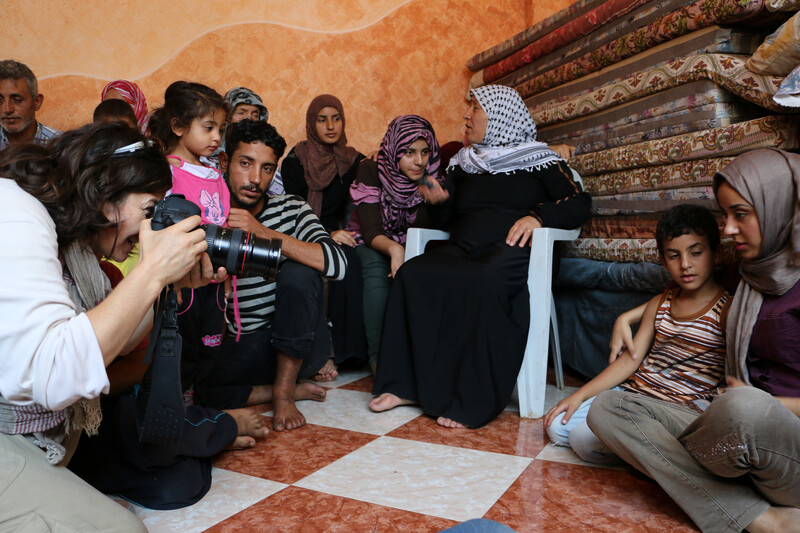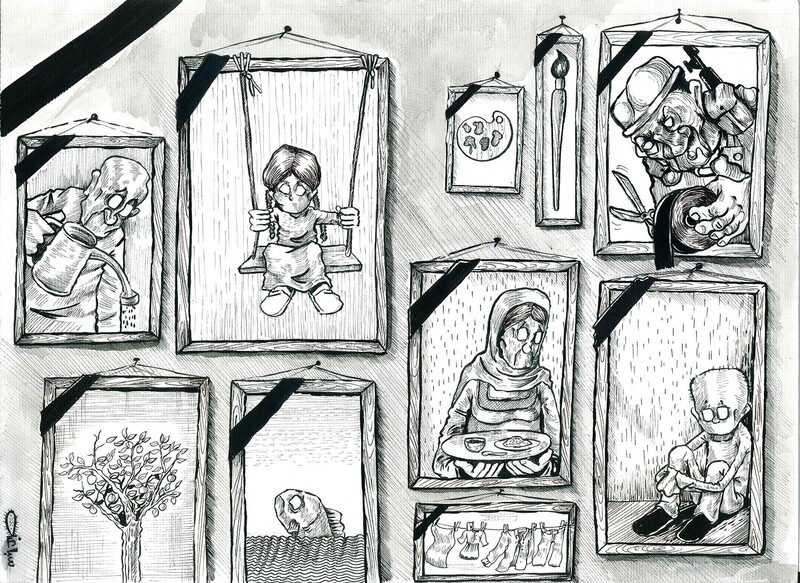The Electronic Intifada Podcast 3 May 2017
In the aftermath of Israel’s 2014 attacks on Gaza, reporter Ala Qandil and photojournalist Anne Paq collected personal stories of Palestinians whose families were devastated by Israel’s violence.
“It’s not only [about] the moment of the attack, it’s not only [about] the war, it’s about before and after,” Qandil told The Electronic Intifada podcast.
Qandil and Paq are the co-creators of Obliterated Families, a multimedia project that shares the stories of 10 families – through images, video and text – amongst dozens of families that Qandil and Paq visited over more than a year.
People were eager to share their experiences, Qandil said.
“Of course we were cautious with approaching families, and worried that we might be bringing more trauma, we might re-open wounds,” she explained, “but people really wanted to have someone listen to their story.”
Qandil said that one family recounted nearly a century of their “constant dispossession, constant struggle, attempts to rebuild and continue, and also [to] stay.”
Paq explained that they wanted “to show the diversity of cases and also in terms of location. We wanted to ensure that all of the Gaza Strip was represented, which makes a point – that all of the Gaza Strip was bombed during the 51 days of bombings,” she said.
“There was no place that was safe,” Paq added.

Anne Paq photographs a family. (Courtesy of Obliterated Families)
A member of the Activestills photography collective, Paq recently won the grand prize in the editorial documentary category of the International Photographer of the Year Awards for images that are central to the Obliterated Families project.
Early iterations of the project were published by The Electronic Intifada in January and July of 2015.
It has since grown into a comprehensive web documentary produced by Paq and Qandil, with the involvement of dozens of other media professionals, and is also available as a downloadable exhibition kit.
Qandil and Paq are currently touring the US with Obliterated Families through early May. For more information, visit the American Friends Service Committee website.
“White and Black: Political Cartoons from Palestine”
A brand-new collection of political cartoons by Mohammad Sabaaneh, White and Black: Political Cartoons from Palestine, depicts Palestinian life and struggle amidst the brutality of Israel’s occupation.

From White and Black: Political Cartoons from Palestine (Mohammad Sabaaneh, Just World Books)
In a podcast interview with Marguerite Dabaie, Sabaaneh said the density of his drawings was a reflection of Palestinian life.
“This crowded cartoon reflects our lives in Palestine, the limited land, and our limited city,” he told the podcast. “My blank paper looks like [Palestinian] cities surrounded by limits and I should put everything in this limited area.”
Sabaaneh is currently on tour across the US.
Listen to guest host Marguerite Dabaie interview Mohammed Sabaaneh, as well as Nora Barrows-Friedman’s conversation with Anne Paq and Ala Qandil via the media player above.
Music break: “Tightening our Strength” by Revolution Makers, Gaza
Theme music by Sharif Zakout
Subscribe to The Electronic Intifada podcast on iTunes (search for The Electronic Intifada). Support our iTunes podcast by rating us and leaving a review.





